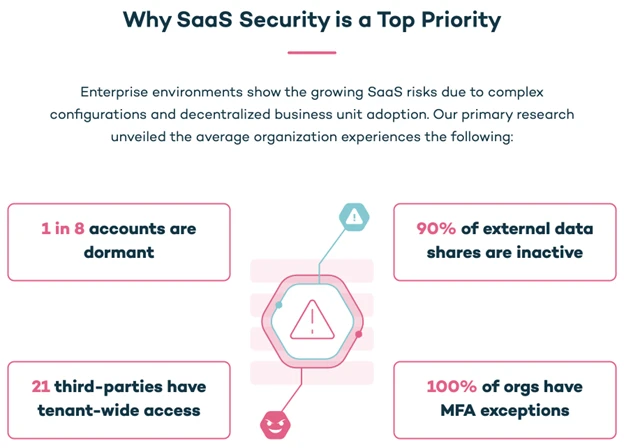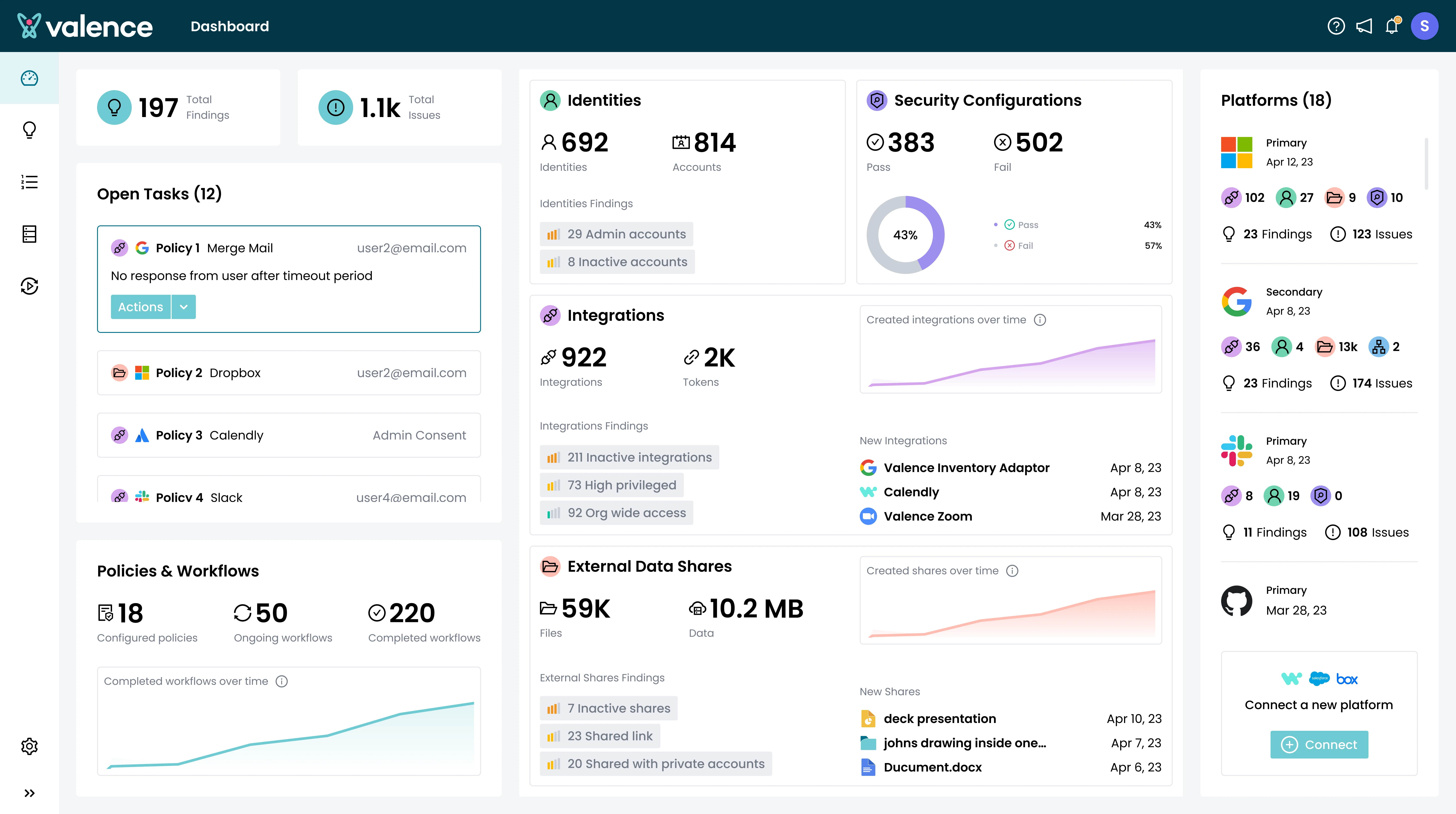Secure SaaS applications with Valence Security and Microsoft Security
Credit to Author: Yoni Shohet| Date: Tue, 05 Mar 2024 17:00:00 +0000
This blog post is part of the Microsoft Intelligent Security Association guest blog series. Learn more about MISA.
Software as a service (SaaS) adoption has accelerated at a lightning speed, enabling collaboration, automation, and innovation for businesses large and small across every industry vertical—from government, education, financial service to tech companies. Every SaaS application is now expanding its offering to allow better integration with the enterprise ecosystem and advanced collaboration features, becoming more of a “platform” than an “application.” To further complicate the security landscape, business users are managing these SaaS applications with little to no security oversight, creating a decentralized administration model. All this is leading to a growing risk surface with complex misconfigurations that can expose organization’s identities, sensitive data, and business processes to malicious actors.
To combat this challenge, Valence and Microsoft Security work together to ensure that SaaS applications are configured according to the best security practices and improve the security posture of identities configured in each individual SaaS application. Together, Valence and Microsoft:
- Centrally manage SaaS identities permissions and access.
- Enforce strong authentication by ensuring proper MFA (multi-factor authentication) and SSO (single sign-on) enrollment and managing local SaaS users.
- Detect and revoke unauthorized non-human SaaS identities such as APIs, service accounts, and tokens.
- Incorporate SaaS threat detection capabilities to improve SaaS incident response.
As most of the sensitive corporate data shifted from on-prem devices to the cloud, security teams need to ensure they manage the risks of how this data is being accessed and managed. Integrating Valence’s SaaS Security with the Microsoft Security ecosystem now provides a winning solution.
SaaS applications are prime targets
Recent high profile breaches have shown that attackers are targeting SaaS applications and are leveraging misconfigurations and human errors to gain high privilege access to sensitive applications and data. While many organizations have implemented SSO and MFA as their main line of defense when it comes to SaaS, recent major breaches have proven otherwise. Attackers have identified that MFA fatigue, social engineering and targeting the SaaS providers themselves can bypass many of the existing mechanisms that security teams have put in place. These add to high-profile breaches where attackers leveraged legitimate third-party open authorization (OAuth) tokens to gain unauthorized access to SaaS applications, and many more attack examples.
State of SaaS security risks
According to our 2023 SaaS Security Report which analyzed real SaaS environments to measure their security posture before they implemented an effective SaaS security program. The results showed that every organization didn’t enforce MFA on 100% of their identities—there are some exceptions, such as service accounts, contractors, and shared accounts, or simply lack of effective monitoring of drift. In addition, one out of eight SaaS accounts are dormant and not actively used. Offboarding users is not only important to save costs, but attackers also like to target these accounts for account takeover attacks since they are typically less monitored. Other key stats were that 90% of externally shared files haven’t been used by external collaborators for at least 90 days and that every organization has granted multiple third-party vendors organization-wide access to their emails, files, and calendars.

Figure 1. Top SaaS Security gaps identified in the 2023 State of SaaS Security Report.
Holistic SaaS security strategy
Establishing a holistic SaaS security strategy requires to bring together many elements—from shadow SaaS discovery, through strong authentication, identity management of both humans and non-humans, managing and remediating SaaS misconfigurations, enforcing data leakage prevention policies, and finally, establishing scalable incident response. Valence and Microsoft take security teams one step further toward a more holistic approach.
Valence joined the Microsoft Intelligence Security Association (MISA) and integrated with Microsoft security products—Microsoft Entra ID and Microsoft Sentinel—to enhance customers’ capabilities to manage their SaaS risks, effectively remediate them, and respond to SaaS breaches. The Valence SaaS Security Platform provides insight and context on SaaS risks such as misconfigurations, identities, data shares, and SaaS-to-SaaS integrations. Extending existing controls with SaaS Security Posture Management (SSPM) capabilities and SaaS risk remediation capabilities. Valence is also a proud participant of the Partner Private Preview of Microsoft Copilot for Security. This involves working with Microsoft product teams to help shape Copilot for Security product development in several ways, including validation and refinement of new and upcoming scenarios, providing feedback on product development and operations to be incorporated into future product releases, and validation and feedback of APIs to assist with Copilot for Security’s extensibility.

Figure 2. Illustrative data: The Valence Platform provides a single pane of glass to find and fix SaaS risk across four core use cases: data protection, SaaS to SaaS governance, identity security, and configuration management.
Secure SaaS human and non-human identities
In the modern identity-first environment, most attackers focus on targeting high privilege users, dormant accounts, and other risks. Enforcing zero trust access has become a core strategy for many security teams. Security teams need to identify all the identities they need to secure. Microsoft Entra SSO management combined with Valence’s SaaS application monitoring—to detect accounts created—provides a holistic view into human identities and non-human (Enterprise Applications, service accounts, APIs, OAuth and 3rd party apps).
Microsoft Entra ID centrally enforces strong authentication such as MFA and Valence discovers enforcement gaps or users that are not managed by the central SSO. Valence also monitors the SaaS applications themselves to discover the privileges granted to each identity and provides recommendations on how to enforce least privilege with minimal administrative access. To continuously validate verification based on risks, the final piece of zero trust strategy, Valence leverages the risky users and service principals signals from Microsoft Entra ID and combines them with signals from other SaaS applications for a holistic view into identity risks.
Protect SaaS applications
Microsoft has a wide SaaS offering that is fueling enterprise innovation. These services are central to core business functions and employee collaboration, cover many use cases, and are spread across multiple business units, but are tied together in many cases such as identity and access management, and therefore their security posture is often related as well. Managing the security posture of SaaS services can be complex because of the multiple configurations and the potential cross service effects that require security teams to build their expertise across a wide range of SaaS.
Many security teams view SaaS apps as part of their more holistic view into SaaS security posture management and would like to create cross-SaaS security policies and enforce them. Valence’s platform integrates with Microsoft Entra ID and other SaaS services using Microsoft via Microsoft Graph to normalize the complex data sets and enable security teams to closely monitor the security posture of their SaaS applications in Microsoft alongside the rest of their SaaS environment.
Enhance SaaS threat detection and incident response
Improving SaaS security posture proactively reduces the chances of a breach, but unfortunately SaaS breaches can still occur, and organizations need to prepare their threat detection coverage and incident response plans. The built in human and non-human identity threat detection capabilities of Microsoft Entra ID, combined with Microsoft Sentinel log correlation and security automation, and Microsoft Copilot for Security’s advanced AI capabilities, create a powerful combination to detect and respond to threats. Valence expands existing detections from compromised endpoint and identity with important SaaS context—for example, did the compromise device belong to a SaaS admin user? Did the compromised identity perform suspicious activities in other SaaS applications? The expanded detections provide critical insights to prioritize and assess the blast radius of breaches. Additionally, Valence’s SaaS threat detection can trigger threat detection workflows in Microsoft products based on its unique indicator of compromise monitoring.
Together, Valence and Microsoft combine the best of all worlds when it comes to SaaS security. From SaaS discovery, through SaaS security posture management, remediating risks, and detecting threats—Valence and Microsoft enable secure adoption of SaaS applications. Modern SaaS risks and security challenges require a holistic view into SaaS risk management and remediation. Get started today.
About Valence Security
Valence is a leading SaaS security company that combines SSPM and advanced remediation with business user collaboration to find and fix SaaS security risks. SaaS applications are becoming decentrally managed and more complex, which is introducing misconfiguration, identity, data, and SaaS-to-SaaS integration risks. The Valence SaaS Security Platform provides visibility and remediation capabilities for business-critical SaaS applications. With Valence, security teams can empower their business to securely adopt SaaS. Valence is backed by leading cybersecurity investors like Microsoft’s M12 and YL Ventures, and is trusted by leading organizations. Valence is available for purchase through Azure Marketplace. For more information, visit their website.
Be among the first to hear about new products, capabilities, and offerings at Microsoft Secure digital event on March 13, 2024. Learn from industry luminaries and influencers. Register today.
Learn more
To learn more about the Microsoft Intelligent Security Association (MISA), visit our website where you can learn about the MISA program, product integrations, and find MISA members. Visit the video playlist to learn about the strength of member integrations with Microsoft products.
To learn more about Microsoft Security solutions, visit our website. Bookmark the Security blog to keep up with our expert coverage on security matters. Also, follow us on LinkedIn (Microsoft Security) and X (@MSFTSecurity) for the latest news and updates on cybersecurity.
The post Secure SaaS applications with Valence Security and Microsoft Security appeared first on Microsoft Security Blog.

